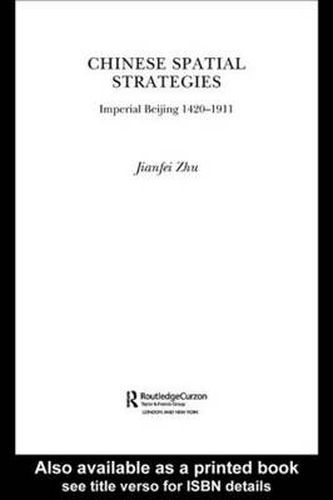Chinese Spatial Strategies: Imperial Beijing, 1420-1911
Jianfei Zhu

Chinese Spatial Strategies: Imperial Beijing, 1420-1911
Jianfei Zhu
How do the Chinese design a space? What are the similarities and differences between spaces designed for palaces and cities? How were the extension of the Great Wall, the reopening of the Grand Canal and the building of Beijing interrelated? By closely examining the buildings of Imperial Beijing (1420-1911) this book seeks to answer these questions by exploring whether there is a generic approach to spatial disposition in the Chinese tradition. Chinese Spatial Strategies considers spatial design on many levels and in different aspects, including the geo-political design of a map of Asia; the layout of the city as a representation of imperial ideology; the city as a social realm of interrelations between the central authority and local urban society; the Forbidden City as an apparatus of power; a comparison between European visual compositions and the aesthetic composition of Beijing. Drawing upon recent work in social theory, the author provides a spatial and political anlysis of the Forbidden City and a realistic, analytical and critical account of Imperial Beijing. This book challenges the convention of formal descriptions of Chinese cities and will appeal to all those with an interest in Chinese buildings and architecture.
This item is not currently in-stock. It can be ordered online and is expected to ship in approx 4 weeks
Our stock data is updated periodically, and availability may change throughout the day for in-demand items. Please call the relevant shop for the most current stock information. Prices are subject to change without notice.
Sign in or become a Readings Member to add this title to a wishlist.


